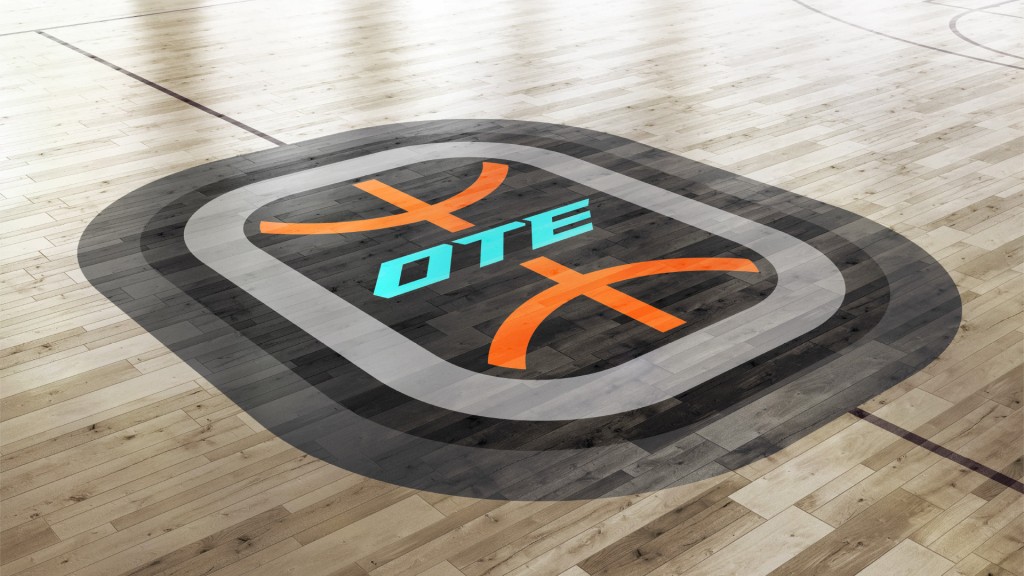With the Overtime Elite roster set, what's next?
Overtime Elite. You’ve read about it. You’ve seen the signings. The viral-video social network company has called next and has fielded a roster and is ready to start actual gameplay in the world of professional prep basketball.
It’s a new era in the world of pre-NBA hoops and 24 players from across the world are going to give the inaugural season a run. The roster is filled with prep stars and potential high school All-Americans and they’ve forfeited those teenage dreams, some of them for upwards of million-dollar contracts.
But what is OTE exactly? Who is on the team? How will this work? Who will these teams play against? And just how will this whole operation, well, operate?
All of these questions have been tossed around the grassroots basketball world this summer. So, why not dive into them? I reached out to a handful of people within the Overtime organization and posed the questions.
WHO IS ON THE OTE TEAM
The roster was finalized earlier in the week as the final players were added to the roster. The players currently signed by Overtime Elite are:
Izan Almansa (Spain)
Dominic Barlow (Dumont, New Jersey)
Matt Bewley (Orlando, Florida)
Ryan Bewley (Orlando, Florida)
Malik Bowman (Washington, DC)
TJ Clark (Conyers, Georgia)
De’Vontes Cobb (Milwaukee, Wisconsin)
Bryce Griggs (Houston, Texas)
Jazian Gortman (Columbia, South Carolina)
Jahzare Jackson (San Diego, California)
Jalen Lewis (Oakland, California)
Lebron Lopez (Philippines)
Emmanuel Maldonado (Puerto Rico)
Jaylen Martin (Tallahassee, Florida)
Nathan Missia-Dio (Belgium)
Jean Montero (Dominican Republic)
Alexandre Sarr (Bordeaux, France)
Jai Smith (Raleigh, North Carolina)
Tyler Smith (Houston, Texas)
Tudor Somacescu (Romania)
Ausar Thompson (Fort Lauderdale, Florida)
Amen Thompson (Fort Lauderdale, Florida)
Bryson Warren (North Little Rock, Arkansas)
Kok Yat (Anchorage, Alaska)
Overtime Elite will field three teams this season. With 24 players signed, OTE will have eight players per team. The teams will be fluid, The roster will be balanced into three teams with an equal amount of talent, per sources within the organization. There are times, however, where the roster could be switched up. There won’t be a tier-based setup for the rosters.
All of the OTE players will be in Atlanta by September 10 and report to the new Overtime facility, which is located in the Atlantic Station neighborhood, just three miles away from downtown. The facility will have a 2,000-seat arena and two NBA-sized practice courts. It is scheduled to be complete at the end of the fall.
WHO ARE THE COACHES?
The coaching and development staff is filled with experience from the pro and collegiate levels.
Former UConn head coach Kevin Ollie will coach all three teams and spearhead the development. Former DePaul and Virginia head coach Dave Leitao (also a stint in the G-League for a season), former Providence star and NBA vet Ryan Gomes is also on staff. So is Tim Fanning, who recently coached Maccabi Tel Aviv and a stint in the G-League. Other skill development coaches include: Lou Cooper, Corey Frazier and Pat Quinn.
WHO DO THEY PLAY?
Perhaps the biggest question that is asked in prep basketball conversations is this - who in the world will they be playing?
OTE said they will play a national schedule - as most programs do nowadays. The schedule will include games against independent postgrad programs.
Programs like Montverde Academy, IMG, Oak Hill will not play Overtime Elite. However, Overtime officials say they are trying to solidify games with the high-end post-grad programs in the Northeast, as well as teams in Florida, Tennessee and in Arizona.
The Overtime Elite teams will also play against each other internally.
There are plans for an international tour as well to take on junior national teams and programs such as Real Madrid and other high-end academy-based European programs.
What’s been interesting, however, is conversations with some of the premier prep schools that have been targeted as opponents by OTE. A couple of schools have told HoopSeen.com that their programs will not play the program after OTE recruited some of their players to join the professional ranks.
IS THIS SUSTAINABLE?
If there has been one question that has been floated around basketball circles it is has been this - where will Overtime make their money back? How can such a financially front-loaded operation sustain itself? Media. That’s how. At least that’s their plan. Overtime is a major player in the youth media space.
Generation Z is their target market and, you could argue, the players within the OTE program may be far less valuable compared to the audience the Overtime brand reaches. The company has a huge footprint in the social media space. They have 5.4 million followers on Instagram, 2.18 million on YouTube and nearly a million on Twitter.
Content for the Gen Z market is a major play in their business model. Make no mistake about it - this is a play in the media space. The kind of content that can be created around this team is a critical part of the business plan. It does beg the question regarding roster creation moving forward - does talent take a backseat to the social content economy? Will a player with a substantial social media following take precedent past talent? Certainly, something to keep a close eye on.
Currently, each player on the roster has signed a contract that guarantees a minimum of $100,000 per year, plus bonuses and shares of equity in Overtime. There are other verticals in place to allow the players to capture financial benefits. Name, image and likeness is in play, Shoe companies are too. Keep a close watch on the sports card market, NFTs and video games.
Sponsorships are a huge part of the business plan, too. With content being created from the teams, the play is aligning with brands to be included in the creation - whether in pointed strategy or through organic ventures.
ON THE FLIP SIDE
There have been a handful of players who were offered a contract to play with the OTE program but turned it down for the collegiate route.
Texan KJ Lewis, a 6-foot-5 do-everything wing from El Paso, was reportedly offered a half-million dollars to go and play for OTE. He told KTSM that he wanted to have the college experience.
Lewis wasn’t the only player to turn down the opportunity to make six-figures as a teenage hooper. They certainly won’t be the last. Every path is different.
There are different paths to betting on yourself. For some, OTE may be the route. For others, the G-League is another. And for most, college remains the next step for the best high school hoopers in the nation. But the game is certainly changing. OTE will have a microscope on the inaugural season.
Will this pathway to the highest level of basketball have a sustaining value on the court and off it? Will the recruiting battles for the top-end prep basketball prospects now be paired against OTE, the G-League and agents?
It’s a new era for players of all levels and this season will be one to watch closely. We certainly will.



